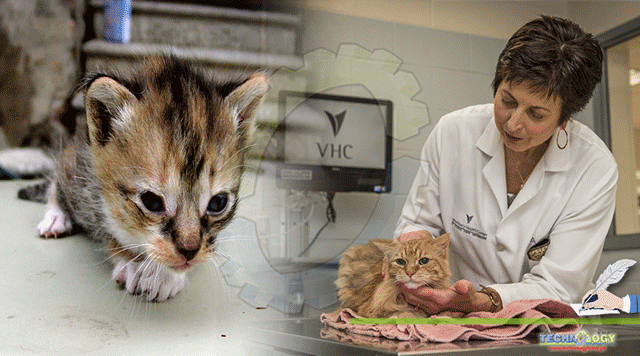Toxoplasma Gondii (T. Gondii), A Single-Celled Parasite, Causes Disease Toxoplasmosis. It Is The Most Common Parasitic Disease & Infection.

Zain Arshad1*, Hamza Hafeez1, Zohaib Saeed1, Rao Zahid Abbas1, Muhammad Tahir Aleem2, Department of Parasitology, University of Agriculture, Faisalabad.
MOE Joint International Research Laboratory of Animal Health and Food Safety, College of Veterinary Medicine, Nanjing Agricultural University, 210095 Nanjing, P.R. China
Introduction
Toxoplasma Gondii (T. Gondii), A Single-Celled Parasite, Causes The Disease Toxoplasmosis. It Is The Most Common Parasitic Disease, And Infection Occurs In All Warm-Blooded Animals, Including Pets And Humans. The life cycle of T. gondii involves the cats necessarily, but rarely the infection occurs in them. Its transmission involves eating of undercooked and contaminated meat, exposure to infected cat feces, and mother to fetus during pregnancy.
The major threat includes the abortion of a fetus during pregnancy. Flu-like symptoms also appear in some cases, but mostly the people affected with this do not show clear sign and symptoms. In infected newborn and people with a compromised immune system, it may cause serious and severe complications. So, there is a major need to know about the public health significance of toxoplasmosis.
Public Health Significance
Public health is the science of protecting and improving the health of people and their communities, which can be achieved by improving healthy lifestyles, researching and diagnosing the disease, and preventing the disease. As far as the public health significance of T. gondii is concerned, it is found in mammals and birds worldwide. Humans are at high risk of acquiring the infection but without clinical signs and symptoms. Severe complications in immunocompromised patients and in the fetus may occur during pregnancy.
The domestic cat is the main host of T. gondii. Infection in cats mainly occurs by ingestion of small infected mammals (rodents and birds), but rarely from infected cat feces. The intermediate hosts include sheep, goats, rodents, cattle, swine, chicken, and birds. Adults acquire the toxoplasmosis infection by consumption of raw and undercooked meat containing the tissue cysts. Consumption of contaminated, unfiltered water and unpasteurized milk can also cause outbreaks. Children can be affected by the ingestion of dirt or sandpit sand contaminated with oocysts after the fecal contamination done by cats.
Transmission by blood transfusion and organ transplantation may also occur. If the infection occurs during pregnancy, it will result in transplacental transmission. The infection is not contagious except in utero condition. After excretion by cats, the oocysts sporulate and, after 1-5 days, become infective and remain infective for more than a year in water and soil. Everyone can acquire the infection, but susceptibility to primary infection is more in women of childbearing age of about 75%.
Preventive Measures
Immunization is not available for the toxoplasmosis infection. Immunocompromised people and pregnant women should follow the following advice:
- Use thoroughly cooked meat, and uncooked meat should be avoided
- Avoid consuming unpasteurized milk, and it’s by-products
- All raw vegetables and fruits should be washed before eating
- Hands should be washed thoroughly before meals
- Gloves should be used for the cleaning of cat litter trays and if possible, delegate this to others
- Ensure the cleaning and emptiness of cat litter trays daily, also check for the regular
- Disinfection with boiling water
In the scenario of control of the case, isolation is not required by the patient. In immunocompromised people and for infections during pregnancy, specific anti-protozoal drugs should be allocated. Prophylactic treatment during immunosuppression in immunosuppressed people is also required, generally with cotrimoxazole therapy. Prolonged treatment is required for the infants who gain the infection before birth to prevent the risk of active infection. There is no risk for the children whose mothers have evidence of previous immunity of more than six months.
Primary infection is rare in pregnancy, although transplacental spread to the fetus may occur up to one-third percent. In pregnancy, the primary infection causes serious fetal disease. In the first trimester, the fetal infection rate is low (up to 15 percent). In later pregnancy, the infection rate is generally very high. There is a significant reduction in the effects appear on the baby if diagnosis infection transmission to the fetus, amniocentesis with PCR can be done.
Active infection to the newborns is treated empirically until the ruling out of congenital disease. After the confirmation of infection, one should continue the treatment for 12 months to reduce long term effects. In healthy and non-pregnant people, who have been diagnosed with toxoplasmosis, there is no need for treatment besides conservative management. While in pregnant and immune-compromised people, there is the need for medical management to avoid complications. The best approach, though, is prevention.
Conclusion
Toxoplasmosis is a zoonotic disease. Its transmission occurs vertically (from mother to fetus) and causes abortion of the fetus during pregnancy. It also causes severe complications in immunocompromised people. If preventive measures are not adopted properly, serious consequences will result.